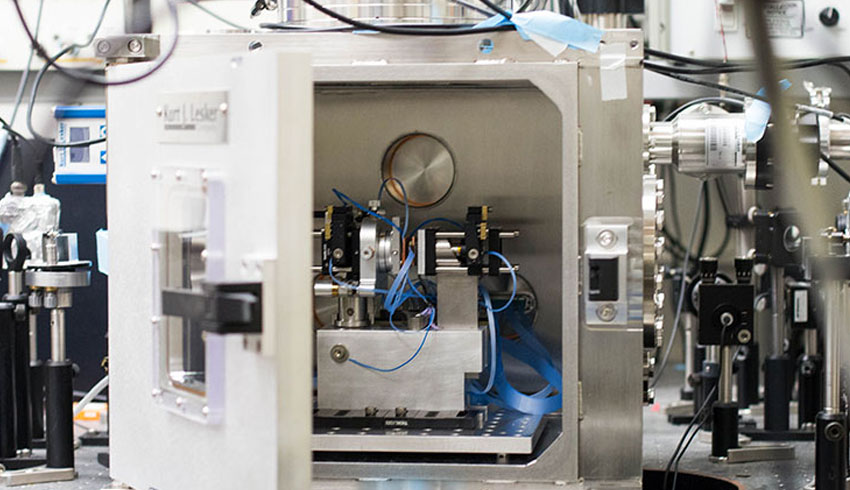If you use a vacuum-insulated thermos to help keep your coffee hot, you may know it’s a good insulator because heat energy has a hard time moving through empty space.
Vibrations of atoms or molecules, which carry thermal energy, simply can’t travel if there are no atoms or molecules around.
Though this interaction is only significant on very short length scales, it could have profound implications for the design of computer chips and other nanoscale electronic components where heat dissipation is key.
It also upends what many of us learned about heat transfer in high school physics.
Xiang Zhang, the professor of mechanical engineering at UC Berkeley, who guided the study, said, "Heat is usually conducted in a solid through the vibrations of atoms or molecules, or so-called phonons – but in a vacuum, there is no physical medium. So, for many years, textbooks told us that phonons cannot travel through a vacuum."
In the experiment, Zhang’s team placed two gold-coated silicon nitride membranes a few hundred nanometres apart inside a vacuum chamber.
When they heated up one of the membranes, the other warmed up, too – even though there was nothing connecting the two membranes and negligible light energy passing between them.
"What we discovered, surprisingly, is that phonons can indeed be transferred across a vacuum by invisible quantum fluctuations," Zhang added.
The seemingly impossible feat of moving molecular vibrations across a vacuum can be accomplished because, according to quantum mechanics, there is no such thing as truly empty space, said King Yan Fong, a former postdoctoral scholar at UC Berkeley and the study’s other first author.
Fong explained, "Even if you have empty space – no matter, no light – quantum mechanics says it cannot be truly empty. There are still some quantum field fluctuations in a vacuum.
"These fluctuations give rise to a force that connects two objects, which is called the Casimir interaction. So, when one object heats up and starts shaking and oscillating, that motion can actually be transmitted to the other object across the vacuum because of these quantum fluctuations."
Though theorists have long speculated that the Casimir interaction could help molecular vibrations travel through empty space, proving it experimentally has been a major challenge.
To do so, the team engineered extremely thin silicon nitride membranes, which they fabricated in a dust-free clean room, and then devised a way to precisely control and monitor their temperature.
They found that, by carefully selecting the size and design of the membranes, they could transfer the heat energy over a few hundred nanometers of a vacuum.
This distance was far enough that other possible modes of heat transfer were negligible – such as energy carried by electromagnetic radiation, which is how energy from the sun heats up Earth.
Because molecular vibrations are also the basis of the sounds that we hear, this discovery hints that sounds can also travel through a vacuum, Zhang said.

